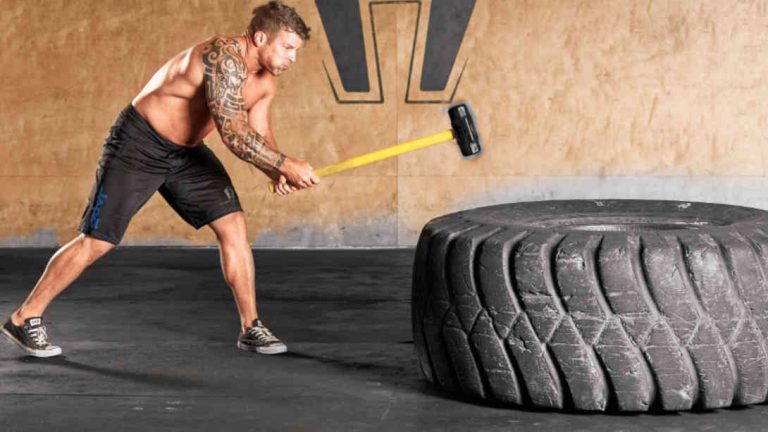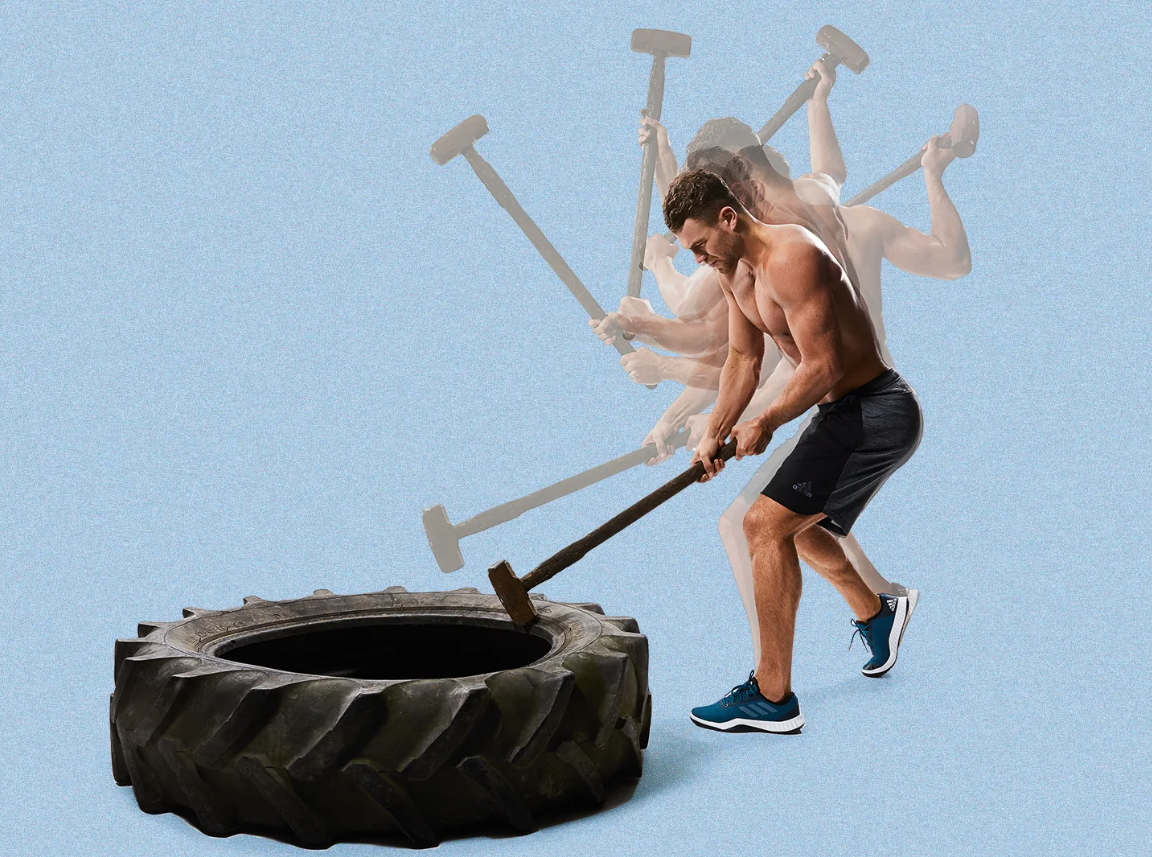When it comes to functional fitness training, the sledgehammer has emerged as a versatile and effective tool for building strength, power, and overall conditioning. From explosive full-body movements to core-engaging rotational exercises, the sledgehammer can be an invaluable addition to your workout routine. However, choosing the right weight for your sledgehammer is crucial to maximize the benefits and minimize the risk of injury. In this comprehensive guide, we'll delve into the intricacies of sledgehammer weight selection, catering specifically to fitness enthusiasts.
Importance of Sledgehammer Weight
The importance of selecting the appropriate sledgehammer weight cannot be overstated. A sledgehammer that is too light may not provide the desired resistance and intensity, while one that is too heavy can compromise form and increase the risk of injury. The weight of a sledgehammer determines the level of force required to swing it and the type of physical exertion involved.
Sledgehammers are primarily used for high-intensity interval training (HIIT), strength conditioning, and functional training. The right sledgehammer weight can enhance these exercises by effectively targeting various muscle groups and improving cardiovascular health. Additionally, factors such as your fitness level, goals, and training experience play a significant role in determining the optimal weight.
The Science Behind Sledgehammer Weight
The physics of force and mass plays a crucial role in understanding the impact of sledgehammer weight on your training. A heavier sledgehammer generates greater momentum, which translates into increased force upon impact. This increased force can lead to greater muscle activation and improved strength and power development.
However, it's important to strike a balance between the weight and your ability to control the sledgehammer. Excessive weight can compromise form, leading to inefficient movement patterns and potential injury risks. Safety and efficiency should always be prioritized when selecting the appropriate sledgehammer weight.
Factors to Consider before buying a sledgehammer?
Choosing the right sledgehammer weight involves several factors:
- Fitness Level: Beginners may need lighter sledgehammers to develop proper technique and build foundational strength.
- Workout Goals: Those aiming for muscle endurance might prefer lighter weights, while those focusing on power and strength may opt for heavier hammers.
- Exercise Type: The specific movements and exercises planned, such as tire slams or overhead swings, influence the ideal sledgehammer weight.
- User Comfort: The handle material and length, as well as personal comfort with the sledgehammer's balance and weight distribution, are essential considerations.
Sledgehammer Weight Guidelines
While there is no definitive one-size-fits-all recommendation for sledgehammer weight, most fitness experts suggest a range of 8 to 16 pounds for general fitness training. However, it's important to note that this range can vary based on individual factors and specific training goals.
The recommended weight range for fitness sledgehammers varies depending on the user's experience and workout goals:
- Beginners: 4-6 pounds
- Intermediate Users: 6-10 pounds
- Advanced Users: 10-20 pounds or more
The impact of weight on performance is significant. A lighter sledgehammer allows for faster, more explosive movements, making it ideal for improving power and conditioning. On the other hand, a heavier sledgehammer challenges your strength and endurance, promoting muscle growth and overall robustness.
How Does Weight Impact Performance?
The weight of the sledgehammer affects workout performance in several ways:
- Intensity: The weight of the sledgehammer significantly impacts workout intensity. Heavier sledgehammers increase intensity by providing greater resistance, which requires more effort and energy expenditure. This challenges muscle groups more effectively, promoting muscle growth and strength development. Additionally, the increased resistance helps burn more calories, making heavier sledgehammers ideal for enhancing strength and cardiovascular fitness.
- Control and Precision: Lighter sledgehammers offer benefits in terms of control and precision. They allow for more controlled movements, reducing the risk of improper form and injury. This is particularly important for beginners and for exercises that require specific targeting of muscle groups. By enabling more precise movements, lighter sledgehammers help ensure correct exercise performance, maximizing effectiveness and minimizing injury risk.
- Endurance vs. Power: The weight of the sledgehammer dictates whether the focus is on endurance or power. Lighter weights are better for endurance training, allowing higher repetitions and longer durations without excessive fatigue. This builds muscular endurance and cardiovascular fitness. Heavier weights, on the other hand, are ideal for building explosive power and strength, requiring muscles to generate more force in a shorter time. This type of training is crucial for developing muscle power and is perfect for high-intensity exercises like tire slams.
In summary, the weight of the sledgehammer shapes workout performance by affecting intensity, control, and the focus on endurance versus power. Selecting the appropriate weight based on fitness level, goals, and exercise type optimizes training for effective and safe results.
What Are the Types of Sledgehammers by Weight?
Sledgehammers are typically categorized into three weight ranges:
Light Sledgehammers (1-4 lbs)
Light sledgehammers are suitable for beginners and those focusing on endurance and high-repetition exercises. They help develop proper form and technique without overwhelming the user. They are often used for high-repetition exercises like sledgehammer swings, chops, and slams.
Medium Sledgehammers (5-10 lbs)
Medium sledgehammers strike a balance between weight and control, making them suitable for intermediate users. They provide enough resistance to build strength and power while still allowing for controlled movements. These weights are perfect for standard tire slams and full-body workouts. Medium sledgehammers are versatile and can be used for a wide range of exercises.
Heavy Sledgehammers (10+ lbs)
Heavy sledgehammers are best for advanced users who have developed the necessary strength and technique. They are ideal for intense strength training and power exercises, such as heavy tire slams. These weights significantly challenge the muscles, promoting muscle growth and enhancing cardiovascular endurance. They are typically reserved for advanced fitness enthusiasts or those targeting specific goals like muscle hypertrophy or grip strength.
How Do You Select the Right Sledgehammer Weight?
Matching the sledgehammer weight to your specific fitness goals(levels) and training tasks is crucial for maximizing the benefits and ensuring safe and effective workouts. Here are some guidelines for the best weight for a sledgehammer according to the user's fitness level:
- For beginners or those focusing on technique and form: Start with a light sledgehammer (1-4 lbs) to develop proper movement patterns and build confidence.
- For general fitness and conditioning: A medium sledgehammer (5-10 lbs) is an excellent choice for full-body workouts, metabolic conditioning, and overall functional training.
- For strength and power development: Heavier sledgehammers (10+ lbs) can be incorporated into your training regimen to challenge your strength, power, and muscular endurance.
Additionally, consider ergonomics and user comfort when selecting your sledgehammer weight. Factors like grip size, handle length, and overall balance can impact your ability to control the hammer and perform exercises safely.
Choosing the right sledgehammer weight depending on Exercise
Tire Slams
Tire slams are a popular exercise for developing explosive power, strength, and cardiovascular endurance. For standard tire slams, using a medium to heavy sledgehammer (6-12 pounds) is recommended. The added weight provides significant resistance, which is essential for maximizing the power generated during the exercise. As you slam the sledgehammer onto the tire, the heavier weight forces your muscles to work harder, particularly targeting the shoulders, arms, core, and legs. This increased effort helps in building overall body strength and improving coordination. Additionally, the resistance from a heavier sledgehammer enhances cardiovascular fitness by elevating the heart rate, making tire slams an effective full-body workout.
Overhead Swings
Overhead swings involve lifting the sledgehammer above the head and then bringing it down with controlled force. For this exercise, using a lighter sledgehammer (4-6 pounds) is suitable. The lighter weight allows you to maintain control throughout the movement, which is crucial for preventing shoulder strain and ensuring proper form. Overhead swings target the upper body, particularly the shoulders, triceps, and upper back. The lighter sledgehammer enables you to perform the exercise with a full range of motion and proper technique, reducing the risk of injury. Additionally, it allows for higher repetitions, contributing to muscle endurance and stability in the shoulders and upper body.
Functional Training
Functional training improves overall strength, coordination, and stability by mimicking everyday movements. A medium sledgehammer (5-10 pounds) offers a balanced approach to control and resistance, making it versatile for exercises like rotational swings, overhead presses, and dynamic movements. This weight range provides enough resistance to challenge muscles without compromising control and technique, targeting multiple muscle groups to enhance functional strength and improve movement patterns used in daily activities. Medium-weight sledgehammers help develop core stability, balance, and overall functional fitness, making them ideal for a well-rounded training routine.
In summary, selecting the appropriate sledgehammer weight based on the exercise type maximizes workout effectiveness and ensures safety. Medium to heavy sledgehammers enhance power and resistance for tire slams, lighter sledgehammers maintain control and prevent strain for overhead swings, and medium sledgehammers balance control and resistance for functional training.
Some Faq’s regarding Sledgehammer weight
Q.What is a sledgehammer used for?
- sledgehammers are used for exercises that build strength, endurance, and power. Common workouts include tire slams, overhead swings, and rotational swings, targeting muscle groups in the shoulders, arms, core, and legs. These exercises help improve cardiovascular fitness, muscle coordination, and overall functional strength. Outside of fitness, sledgehammers are used for heavy-duty tasks such as demolition, breaking concrete, driving stakes, and other construction or metalworking tasks.
Q.What is the best weight for a sledgehammer?
A.The best weight for a sledgehammer depends on the intended use and the user's fitness level. For fitness purposes:
- Light sledgehammers (4-6 pounds) are ideal for beginners and for exercises requiring control and precision, such as overhead swings.
- Medium sledgehammers (5-10 pounds) offer a balance of control and resistance, suitable for functional training and general workouts.
- Heavy sledgehammers (6-12 pounds) are best for advanced users performing high-intensity exercises like tire slams to build power and strength.
For general use in construction or demolition, heavier sledgehammers (10-20 pounds) are typically preferred for their ability to deliver powerful blows and break through tough materials.
How much does a sledgehammer weigh?
Sledgehammers in fitness come in a variety of weights, typically ranging from 4 to 12 pounds. Lighter options, around 4 to 6 pounds, suit beginners or exercises requiring precision. Heavier sledgehammers, weighing 10 to 12 pounds, are preferred by advanced users aiming for more resistance and intensity. This range accommodates diverse fitness levels and goals, ensuring users can tailor their workouts effectively.
What are common sledgehammer sizes?
Sledgehammers vary in size, primarily based on the weight of the head and the length of the handle. Common sizes include:
- Light sledgehammers: 2-4 pounds, with shorter handles around 10-14 inches, used for precision tasks and light demolition.
- Medium sledgehammers: 5-10 pounds, with handles around 14-24 inches, suitable for general fitness and functional training.
- Heavy sledgehammers: 10-20+ pounds, with handles around 24-36 inches, ideal for intense workouts and heavy-duty construction tasks.
Choosing the right size and weight depends on the specific exercise or task, user strength, and control requirements.
Conclusion
In conclusion, selecting the right sledgehammer weight is essential for maximising the benefits of your fitness training while ensuring safety and proper form. By considering factors such as your fitness level, goals, and training experience, and following industry best practices, you can make an informed decision that aligns with your specific needs. Remember, the key is to strike a balance between challenging yourself and maintaining control, ultimately leading to a more effective and enjoyable sledgehammer workout experience.










